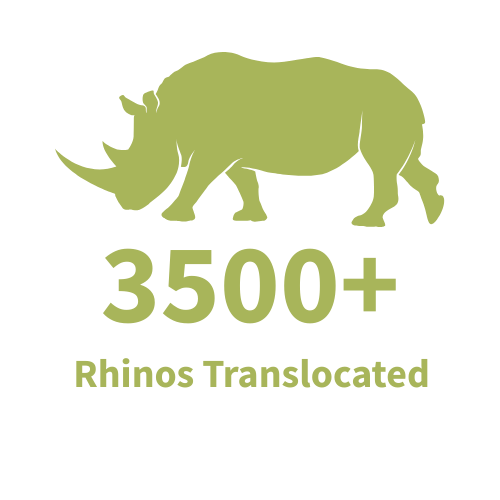Africa’s leading wildlife translocation and conservation logistics company, with over 25 years of experience in supporting some of the continent’s most complex and high-impact conservation initiatives.




Conservation Solutions is a specialist wildlife translocation and logistics company working at the forefront of large-scale conservation delivery across Africa. With over 25 years of experience, we support governments, NGOs, communities and protected area managers in re-establishing wildlife populations, bolstering vulnerable species and restoring ecological integrity.
Our team has worked across more than 40 species in over 18 African countries, with recent projects extending into Asia. We combine deep field expertise with operational precision to plan and execute the safe movement of wildlife, often across complex national and international boundaries as part of continent conservation initiatives.
As protected areas continue to shrink and species face increasing pressure, translocations remain a vital conservation tool. By relocating wildlife from areas of relative abundance to regions where they have become locally extinct or require reinforcement, we help maintain and restore biodiversity across some of the continent’s most threatened ecosystems.
We have been responsible for some of the largest and most logistically complex wildlife translocations undertaken in Africa, often in remote, inaccessible locations and involving cross-border permitting, air and ground transport, and coordination among multiple stakeholders.
Our operations span the entire process, from strategic planning and field capture to custom crate design, veterinary oversight, transport, and compliance with national and international regulations. Every aspect is executed with precision, professionalism, and an uncompromising commitment to safety and animal welfare.
We have supported a wide range of wildlife management interventions, including collaring, monitoring, disease testing, quarantining, dehorning, and other veterinary procedures, often involving endangered or high-risk species and requiring specialised expertise.
We partner with leading wildlife veterinarians across the region, selecting the most appropriate professionals based on the species, landscape, and technical demands of each project. This approach ensures that every operation benefits from the highest standard of veterinary care, tailored to the specific conservation context.
We design and build specialised capture and transport equipment to support the safe and efficient movement of a wide range of wildlife species. All equipment is developed in our workshop and refined through years of experience across Africa and beyond. From modular transport crates to custom loading systems, each design is tailored to meet species-specific needs and withstand the demands of remote and logistically complex translocations.
Our equipment has been shipped to conservation agencies in various countries across the world, including India, Kazakhstan, the United Kingdom, Botswana, Rwanda, Malawi, Chad, and Côte d’Ivoire, and is regularly accompanied by training and technical support to build capacity within government, local management and NGO field teams.
Conservation Solutions is made up of a highly experienced, operations-focused team with the expertise to deliver complex conservation projects across Africa.
Our team includes Africa’s leading wildlife veterinarians, specialist capture helicopter pilots, crane operators, professional drivers experienced in wildlife transport, logistics coordinators, and ground crews. Our dedicated workshop team designs and builds customised capture and transport equipment to support operations across a wide range of species and environments.
Together, we deliver professional, logistical, and technical solutions to conservation projects across Africa and beyond.
After decades of increasing pressure and insufficient protection, many of Africa’s parks have lost one or more key species. We have led numerous reintroduction efforts, returning species after long absences to establish founder populations capable of growing and sustaining themselves over time.
With well-protected areas under increasing pressure and many species in decline, it is often necessary to supplement existing populations. The majority of our translocations involve moving individuals from areas where they remain relatively abundant to regions where their numbers are low, helping to boost population size and resilience to ensure long-term survival.
As human populations grow and compete with wildlife for land and resources, conflict inevitably arises. In certain cases, our translocations help ease this pressure by relocating animals from densely populated areas with sufficient resources to less contested landscapes, reducing risk for both people and wildlife.
Populations isolated by human development are often unable to exchange individuals naturally, resulting in low genetic diversity. Translocations are a mechanism that mimics the natural process of new individuals entering into a population, otherwise known as meta-population management. In some cases, we specifically translocate select individuals to enhance genetic diversity and strengthen the overall health of the population.